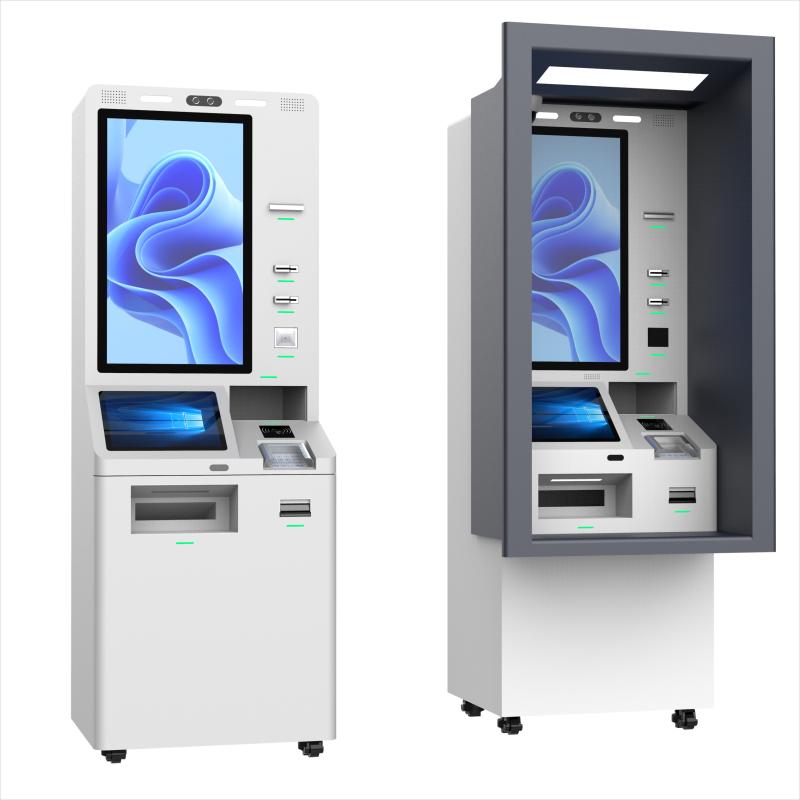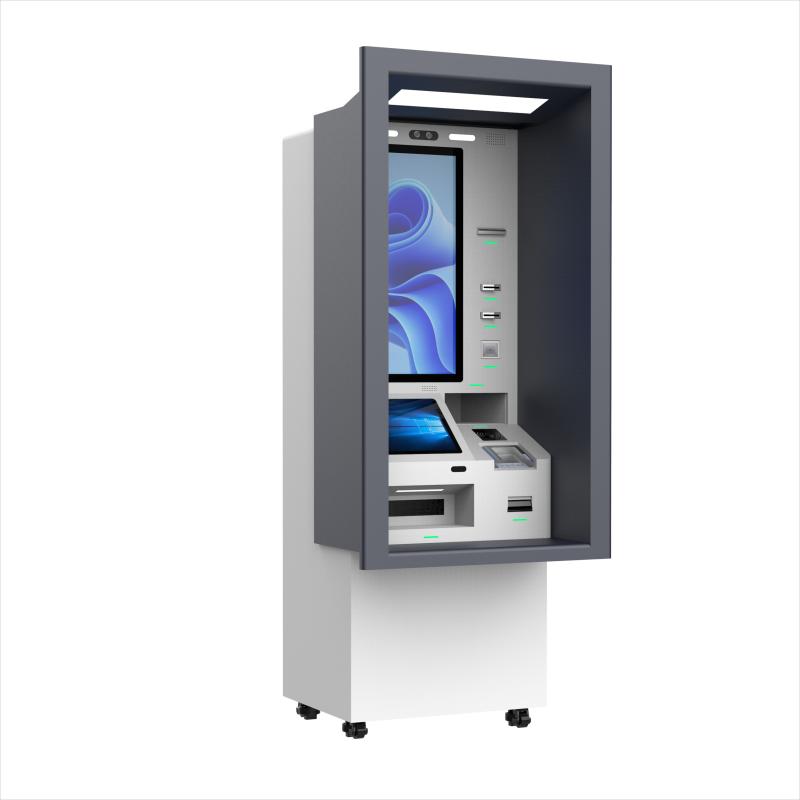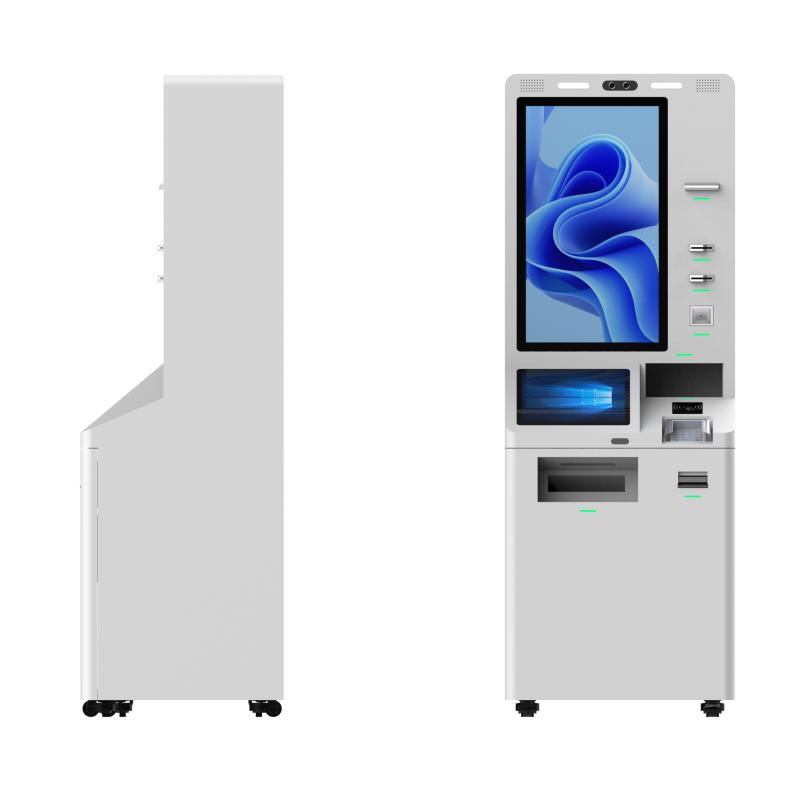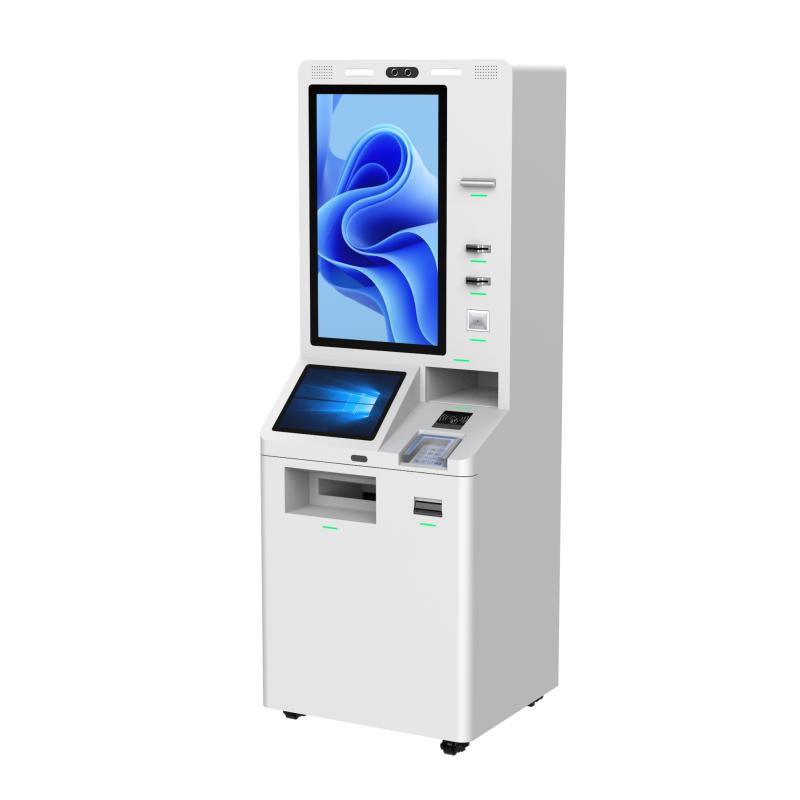
| Component | Description | Manufacturing Process | Process Description |
|---|---|---|---|
| Touchscreen Display | Interactive screen for user input and navigation. | Design & Sourcing | Select and source a touchscreen based on size, resolution, and durability. |
| Enclosure | Secure casing to house internal components, typically made of metal or heavy-duty plastic. | Fabrication & Assembly | Fabricate and assemble the enclosure to ensure security and durability. |
| Processor & Motherboard | Core computing unit for running the kiosk's software and handling transactions. | Component Integration | Integrate processor and motherboard, ensuring compatibility with other parts. |
| Cash Dispenser/Recycler | Device for dispensing or recycling cash. | Installation & Testing | Install and test the cash dispenser to ensure accurate and reliable operation. |
| Card Reader/Payment Module | Hardware for processing credit/debit card transactions securely. | Integration & Calibration | Integrate and calibrate the payment module for secure transactions. |
| Networking Components | Includes modules for Wi-Fi or Ethernet connectivity. | Networking Setup | Install and configure networking hardware for reliable data communication. |
| Security Features | Includes locks, cameras, and other security measures to protect the kiosk and transactions. | Security Integration & Testing | Install and test security features to meet banking standards. |
| Software | Custom operating system and banking application software tailored to banking functions. | Software Installation | Install and configure software for banking operations and user interface. |
| Power Supply | Provides electrical power to the kiosk and its components. | Power System Integration | Integrate the power supply, ensuring it meets the kiosk’s power requirements. |
| User Interface Design | Design of the on-screen menus and navigation for a user-friendly experience. | UI/UX Design & Implementation | Develop and implement an intuitive user interface tailored for banking tasks. |
Bank kiosks are equipped with specialized hardware and software to facilitate secure and efficient banking services. The hardware includes a high-resolution touchscreen display for user interaction, a robust enclosure to house components, and essential peripherals like cash dispensers, card readers, and printers. The processor and motherboard manage the kiosk's operations, while networking components ensure connectivity for real-time transaction processing. Software comprises a secure operating system tailored for banking, featuring a user-friendly interface for transaction handling, account management, and customer support. Integration with backend banking systems ensures accurate transaction processing and data security. Together, the hardware and software provide a seamless self-service experience for banking customers.

Bank kiosk offers a range of applications that enhance customer convenience and operational efficiency. Applications include cash withdrawals, deposits, account balance inquiries, bill payments, and check deposits, allowing customers to perform transactions without waiting in line. Benefits of bank kiosks include reduced wait times and improved service efficiency, as customers can quickly complete transactions independently. They also lower operational costs by minimizing the need for teller staff for routine tasks. Additionally, kiosks provide extended service hours, accommodating customers outside regular banking hours, and enhance security with advanced transaction monitoring and authentication features. Overall, bank kiosks streamline banking processes, improve customer satisfaction, and support the bank's operational goals.

Branding and Aesthetics: Customize the kiosk with the bank’s logo, colors, and design elements to align with the institution's branding and create a cohesive look.
User Interface Design: Tailor the software interface to include specific features, user workflows, and language options to enhance usability and meet the needs of diverse customers.
Hardware Configuration: Select from different hardware components, such as touchscreen sizes, cash dispenser models, card readers, and printers, to match the bank’s operational requirements.
Security Features: Implement advanced security measures such as biometric scanners, high-definition cameras, and secure encryption to ensure safe and compliant transactions.
Functionality: Add or modify kiosk functions based on the bank’s needs, including services like bill payments, check cashing, and account management features.
Accessibility Options: Include features to support accessibility, such as audio assistance, adjustable screen heights, and tactile controls, to ensure the kiosk is usable by all customers.

The cost of a bank kiosk typically ranges from $5,000 to $15,000, depending on features and customization. This includes expenses for hardware, software, installation, and ongoing maintenance. Investing in bank kiosks can offer significant returns on investment (ROI) by improving operational efficiency and reducing labor costs. Kiosks streamline customer transactions, such as cash withdrawals and deposits, which decreases wait times and enhances service delivery. Additionally, they extend service hours and reduce the need for teller staff, leading to lower operational expenses. Over time, the efficiency gains and cost savings from reduced staffing contribute to a positive ROI for banks.

| Type | Sizes | Design | Price Range |
|---|---|---|---|
| Cash Dispenser | Compact to Standard (15" - 22" screens) | Floor-standing, secure enclosure | $5,000 - $10,000 |
| Deposit Kiosk | Standard (19" - 24" screens) | Freestanding, with integrated cash and check deposit features | $7,000 - $12,000 |
| ATM Kiosk | Standard to Large (19" - 27" screens) | Secure enclosure, high accessibility | $8,000 - $15,000 |
| Self-Service Terminal | Compact to Medium (15" - 22" screens) | Interactive, often wall-mounted or freestanding | $4,000 - $9,000 |
| Multifunction Kiosk | Large (22" - 27" screens) | All-in-one design with multiple banking functions | $10,000 - $15,000 |
| Information Kiosk | Slim to Medium (15" - 22" screens) | Sleek, often integrated with branch décor | $3,000 - $6,000 |
How to Buy a Bank Kiosk: Step-by-Step1. Identify Requirements: Determine the specific functions the kiosk will perform (e.g., cash dispensing, deposit processing) and the required features (e.g., security, size). 2. Research Vendors: Look for reputable kiosk manufacturers with experience in banking solutions. Check reviews, product offerings, and support services. 3. Request Quotes: Contact multiple vendors for detailed quotes. Ensure quotes include all components, customization options, installation, and ongoing maintenance. 4. Evaluate Customization Options: Work with vendors to customize the kiosk’s design, hardware, and software to meet your bank’s needs. Consider branding, security features, and functionality. 5. Review Contracts and Terms: Carefully review the terms of purchase, including warranty, service agreements, and support. Ensure all aspects are covered to avoid unexpected costs. 6. Finalize Purchase and Arrange Installation: Choose the best proposal and place your order. Coordinate with the vendor for delivery, installation, and training to ensure a smooth setup and operation. | Purchase Considerations for Bank Kiosks1. Functionality: Ensure the kiosk supports the necessary banking functions and integrates well with existing systems. 2. Security: Evaluate the kiosk’s security features, including encryption, biometric authentication, and secure cash handling, to protect sensitive information. 3. Customization: Consider the extent to which the kiosk can be customized to fit your bank’s branding, design preferences, and operational needs. 4. Durability and Maintenance: Check the kiosk’s build quality and maintenance requirements to ensure long-term reliability and minimal downtime. 5. Cost: Analyze the total cost of ownership, including purchase price, installation, maintenance, and any additional features or upgrades. 6. Vendor Support: Assess the level of support provided by the vendor, including installation, training, and ongoing maintenance services, to ensure reliable operation. |
What did our happy clients say?
We’re extremely satisfied with our new bank kiosk! It’s user-friendly and has streamlined our operations significantly. The installation was smooth, and the customer support was excellent. Highly recommend this kiosk for any financial institution.
The bank kiosk we purchased has been a great addition to our branch. It’s reliable, efficient, and has reduced wait times for our customers. Thanks to the manufacturer for a quality product and excellent service!
Our new bank kiosk is exactly what we needed. It’s customizable, secure, and integrates seamlessly with our systems. We appreciate the thorough support from the kiosk manufacturer. A great investment for any bank!
We’re thrilled with the performance of our bank kiosk. It’s easy to use and has improved our customer service efficiency. The setup was quick and the manufacturer provided fantastic support throughout the process. Highly satisfied!